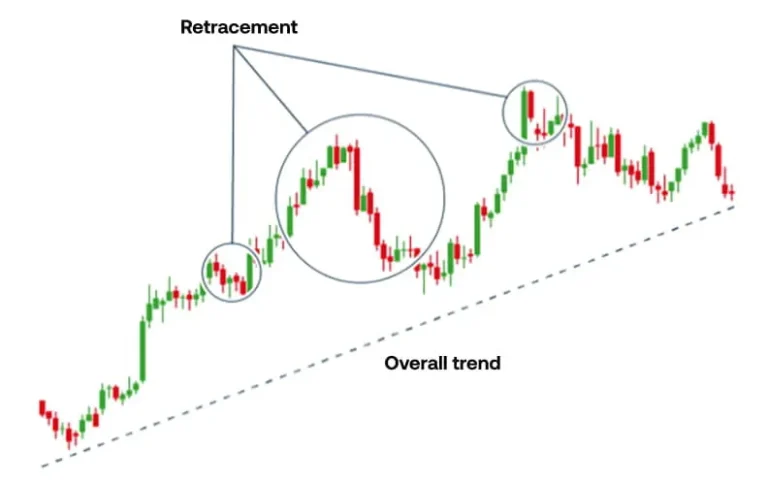Leverage trading is a financial strategy that allows traders to control larger market positions with a smaller amount of capital. It's primarily used by traders and investors to amplify potential returns, but it also increases risk. This method is common in forex, stocks, and commodities markets.
- Main Benefit: Amplified potential returns on investment
- Primary Concern: Increased risk of substantial losses
- Best For: Experienced traders with high risk tolerance
- Important Note: Requires strict risk management and market knowledge
Leverage Trading: Advantages and Disadvantages
This table outlines the key pros and cons of leverage trading, helping traders understand the potential benefits and risks associated with this financial strategy.
| Pros | Cons |
|---|---|
| Amplified potential returns | Magnified losses |
| Increased market exposure | Higher risk of account depletion |
| Access to larger positions | Margin calls and forced liquidation |
| Improved capital efficiency | Increased emotional stress |
| Opportunity for portfolio diversification | Higher transaction costs and fees |
| Ability to profit from small price movements | Potential for overtrading |
| Enhanced market participation | Complex risk management requirements |
| Flexibility in trading strategies | Interest charges on borrowed funds |
| Potential for higher returns on investment | Increased vulnerability to market volatility |
| Access to expensive assets | Risk of overleveraging |
| Ability to take advantage of short-term opportunities | Potential for rapid account drawdowns |
| Increased buying power | Limited risk management options |
| Opportunity for professional-level trading | Psychological pressure to perform |
| Potential for higher profits in shorter timeframes | Increased exposure to market manipulation |
| Ability to hedge positions more effectively | Risk of negative balance |
| Enhanced liquidity in personal trading | Potential for increased slippage |
| Opportunity to trade in larger markets | Regulatory restrictions and limitations |
| Potential for faster account growth | Increased complexity in position sizing |
| Ability to capitalize on market inefficiencies | Higher potential for trading errors |
| Enhanced flexibility in position management | Risk of over-concentration in single positions |
| Opportunity for more sophisticated trading strategies | Increased difficulty in risk assessment |
| Potential for higher returns in ranging markets | Potential for forced position closures |
| Ability to take advantage of arbitrage opportunities | Increased exposure to counterparty risk |
| Enhanced ability to profit from market trends | Risk of amplified losses due to gaps |
| Opportunity for more frequent trading | Potential for increased tax complications |
| Ability to maximize returns on successful trades | Risk of breaching trading regulations |
| Enhanced potential for scalping strategies | Increased exposure to overnight risks |
| Opportunity to profit from both rising and falling markets | Potential for increased trading addiction |
| Ability to implement more complex hedging strategies | Risk of misunderstanding leverage mechanics |
| Enhanced potential for swing trading | Increased difficulty in long-term position holding |
Leverage Trading Market Statistics
This table provides key market statistics and data on leverage trading, highlighting its prevalence and impact in various financial markets.
| Statistical Analysis & Market Data | |
|---|---|
| Global Forex Market Daily Trading Volume | $6.6 trillion (2022) |
| Average Leverage Ratio in Forex Trading | 50:1 to 100:1 |
| Percentage of Retail Forex Traders Using Leverage | Approximately 90% |
| Global CFD Market Size | $74.5 billion (2021) |
| CFD Market Projected CAGR (2022-2028) | 5.9% |
| Average Win Rate for Leveraged Traders | 30-35% |
| Percentage of Day Traders Who Lose Money | 70-80% |
| Maximum Leverage Allowed in US Forex Market | 50:1 for major currency pairs |
| Maximum Leverage in EU for Retail Traders | 30:1 for major currency pairs |
| Average Holding Time for Leveraged Positions | 2-3 days |
Technical Aspects of Leverage Trading
This table outlines the key technical specifications and requirements for engaging in leverage trading across various financial instruments.
| Technical Specifications & Requirements | |
|---|---|
| Minimum Account Balance | Varies by broker, typically $100-$1000 |
| Maximum Leverage Ratio | Up to 500:1 (jurisdiction dependent) |
| Margin Requirement | 1% to 20% of position size |
| Stop-Loss Order Capability | Required for risk management |
| Trading Platform | MetaTrader 4/5, cTrader, proprietary platforms |
| Execution Speed | Milliseconds (varies by broker) |
| Minimum Trade Size | 0.01 lots (micro lots) for forex |
| Margin Call Level | Typically 50-100% of used margin |
| Required Documents | ID, proof of address, financial statements |
| Regulatory Compliance | KYC and AML procedures mandatory |
Cost and Value Analysis of Leverage Trading
This table presents a comprehensive analysis of the costs involved in leverage trading and the potential value it offers to traders.
| Cost & Value Analysis | |
|---|---|
| Average Spread Cost | 1-3 pips for major forex pairs |
| Overnight Financing (Swap) | Varies, can be positive or negative |
| Commission (if applicable) | $0-$10 per lot traded |
| Potential Return on Investment | Highly variable, can exceed 100% or result in losses |
| Risk of Loss | Can exceed initial investment |
| Capital Efficiency | High, allows trading larger positions with less capital |
| Margin Interest Rate | Typically 2-5% above base rate |
| Opportunity Cost | Tied-up margin, potential missed trades |
| Educational Resources Cost | $0-$5000+ for courses and mentoring |
| Trading Software Costs | $0-$300+ per month for advanced platforms |
Leverage Trading vs. Traditional Trading
This table compares leverage trading with traditional trading methods, highlighting key differences and considerations for traders.
| Comparative Analysis & Alternatives | |
|---|---|
| Capital Requirements | Lower for leverage trading, higher for traditional |
| Profit Potential | Higher for leverage, lower but more stable for traditional |
| Risk Level | Higher for leverage, lower for traditional |
| Market Access | Wider for leverage, more limited for traditional |
| Trading Hours | 24/5 for forex leverage, limited for traditional stocks |
| Regulatory Protection | Less for leverage, more for traditional in many jurisdictions |
| Transaction Costs | Generally lower for leverage, higher for traditional |
| Ownership of Assets | No ownership in leverage CFDs, actual ownership in traditional |
| Dividend Payments | Adjustments in leverage CFDs, actual payments in traditional |
| Learning Curve | Steeper for leverage, gentler for traditional |
Future Outlook of Leverage Trading
This table explores the anticipated trends and developments in leverage trading, considering technological advancements and regulatory changes.
| Future Outlook & Industry Trends | |
|---|---|
| AI and Machine Learning Integration | Increased use for risk management and trade execution |
| Regulatory Tightening | Expected stricter leverage limits and investor protections |
| Cryptocurrency Leverage Trading | Growing popularity, but with high volatility concerns |
| Mobile Trading Dominance | Shift towards mobile-first platforms and apps |
| Social Trading Growth | Increased adoption of copy trading and social features |
| ESG-Focused Leverage Products | Rising demand for sustainable and ethical trading options |
| Blockchain in Trade Settlement | Potential for faster, more transparent transactions |
| Retail Trader Education | Greater emphasis on risk education and responsible trading |
| High-Frequency Trading Impact | Continued influence on market dynamics and liquidity |
| Global Market Access | Expanding access to diverse global markets for retail traders |







